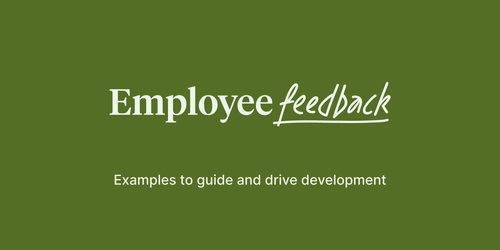
Redesigning performance management for a hybrid workplace

For many years, employees have been expected to put in a certain number of work hours each day or week. In the early 1800s, people were clocking 80 to 100 working hours per week before 40 hours became more the norm in the 1920s.
And those hours? They were all logged in the workplace. Supervisors could look over employees’ shoulders and feel assured that everybody was putting in an honest day’s work.
Today, monitoring productivity and managing performance isn’t quite so straightforward. More employees are working remotely than ever before due to the pandemic. Plus, an increasing focus on work-life balance has many people (and even entire countries) refuting the idea of a 40-hour workweek – and instead opting to build work around their lives, and not the other way around.
Employees are spread out in both locations and schedules. But, where does that leave managers who want to continue to lead high-performing teams without attaching their performance to dated metrics like “time spent at work”?
Hybrid work is here to stay
First thing first: the current way of working isn’t a passing fad.
When the COVID-19 pandemic forced workers out of the office and into work-from-home situations, it was an intimidating shift for a lot of companies. However, many quickly realized that they didn’t need employees within the four walls of the office building in order to keep moving forward. This was a revealing (albeit, mandatory) lesson that employees could have more flexibility without sacrificing the quality of their work, especially for companies that had previously rejected the idea of remote work.
For that reason, it’s likely that a hybrid approach – where employees have the freedom to choose where they get their best work done, whether that’s in-office, at home, or a combination of the two – is here to stay.
Surveys show that employees overwhelmingly prefer a flexible, hybrid model and that nearly half of them would look for a new job if their current employer doesn’t opt for this approach. Further, a report from Accenture found that 63% of high-growth companies have already implemented a hybrid (or “productivity anywhere”) workforce model.
Why the popularity? While a hybrid workforce can admittedly present some logistical challenges for employers, a hybrid strategy is smart for several reasons:
- Allows flexibility and choice. Hybrid work allows employees to work where they’re most comfortable and productive.
- Improves work-life balance. A hybrid approach allows staff to balance their personal lives with their careers. In light of the pandemic and growing Great Resignation, this is likely to be a major point of emphasis for many employees and a key factor when it comes to turnover and retention.
- Optimizes for teams. Hybrid work makes it possible for each team or department to take the route that’s best for its own needs, rather than going for an all-in-one format.
- Sets the foundation for a distributed workforce. A hybrid workplace helps enable a distributed workforce, which has been found to bring powerful advantages for a company, like hiring the best people without needing them to be in your geographic location.
That said, a hybrid work environment requires not only very different ways of communicating and collaborating but also managing people and performance. When you have some teams working from the office, some working from home, and others splitting their time between the two, performance management takes on a whole new dimension.
How to redesign performance management for a hybrid workplace
As teams move to hybrid work models, gone are the days when managers could walk down the office aisle and peek into cubicles to confirm that employees are focused on their tasks.
Hybrid work requires a higher degree of trust between leaders and their teams, as well as an entire organizational culture that’s focused on results rather than the hours worked to achieve them.
This shift can feel counterintuitive, especially for managers who are used to relying on the clock as a performance metric. To help guide this transition, we’re sharing four steps organizations can take to redesign their approach to performance management so managers can shine the spotlight on employee performance without relying on punch-in time.
1. Set clear goals
To evaluate performance based on results instead of the amount of time spent logged into the company system, employees and managers must have a solid, shared understanding of the exact results they’re shooting for.
This is the first rule of goal-based performance management – objectives must be crystal clear. Unambiguous goals help all employees (whether fully remote, hybrid, or always in the office). But, this clarity is especially important for employees who don’t have as much face-to-face interaction, as it can leave them feeling detached and disconnected from their managers, their teams, and the work they’re doing together.
Various metrics could be used to gauge performance, depending on the type of organization and the role of each specific employee. Leaders could look to see that deliverables are completed by a specific deadline or that employees are hitting agreed-upon targets.
Below are some examples of goals that different employees in different roles could have:
- Sales: Sales objectives are usually pretty straightforward. Most goals are associated with achieving X% more customers..
- Customer service: A customer service specialist might aim to hit a certain score on customer surveys or successfully resolve a particular number of tickets per day or week.
- SEO specialist: Performance in an SEO role might be measured based on meeting specific traffic numbers or a percentage increase over the previous year.
The clearer your performance goals are, the more motivating they’ll be for employees and the easier for supervisors to monitor and manage. For even more effectiveness, make sure to write the goals down.
2. Use a proven goal-setting method
You might think that employee goals are clear-cut and unambiguous, but only about half of employees (remote or not) strongly agree that they know what’s expected of them at work. And, when pandemic working has taken a toll on employee mental wellbeing and contributed to an overall sense of uncertainty, the last thing your employees need is murky targets and guidelines at work.
To ensure that your objectives are unambiguous and actually inspire action, use a formula like the SMART method to check all of the boxes of an explicit goal. The acronym stands for:
- Specific: Goals should be clear and specific.
- Measurable: Make your performance objectives quantifiable. Assign a number or other value to the goal, so that everyone knows what is expected of them.
- Achievable: Ensure that your goals are realistic. They should be not only doable but reasonable – not something that will consume the employee's life.
- Relevant: Goals assigned to individual employees should make sense within the larger context of your organization’s objectives.
- Time-bound: Part of setting clear goals is assigning a time frame. This ensures that the other SMART parameters are met and also helps prevent objectives from dragging out endlessly. Performance goals are often set quarterly, but this should be personalized for each employee.
For example, a SMART goal for a customer service professional might look like this:
Maintain our company reputation for quality service (relevant) by responding to and addressing a minimum of 100 customer tickets (specific and measurable) each workweek (time-bound).
Other goal-setting methods exist (Objectives and Key Results, or OKRs, are another popular framework), but the SMART system has been a favorite for a long time. Whichever you choose to try, give it time to properly evaluate its effectiveness, and don’t be afraid to pivot.
3. Tie goals to company objectives
Before setting goals for staff, you need to review your company goals carefully. It doesn’t make much sense to assign certain goals to employees if they don’t help further the organization's overall mission.
Moreover, having an objective that directly ties into the larger organizational mission can be a powerful motivator for employees. That’s especially important when you consider that 60% of all employees (remote or not) can’t fully agree that they understand what their company stands for. Remote employees, in particular, say they’re less likely to feel recognized for their contributions at work.
When team members feel they’re contributing to a greater purpose, they feel more connected and empowered. And when employees feel engaged and empowered tend to work harder to achieve their goals.
Basing goals on larger overall objectives can also help weed out biases and ensure that the people conducting performance reviews are as objective as possible – two important things for creating an inclusive culture.
4. Involve employees in the entire process
Performance management shouldn’t be a top-down activity. Of course, it’s the leader’s responsibility to ensure that employees meet expectations, but those expectations shouldn’t be handed down without conversation.
Instead, employees should be involved in goal-setting from the beginning. Organizations should ensure that direct reports are empowered to partner closely with their managers and have candid conversations about performance. This two-way street offers many benefits, including:
- Increased buy-in for goals, as employees had a hand in directly shaping them
- More realistic and motivating objectives, as employees can provide input before goals are solidified
- Improved trust between managers and employees, as they work closely together to identify metrics
- Greater ability to recognize and address performance issues proactively, as employees are more in-tune with expectations
Once goals are set, it’s crucial to check in on progress regularly. After all, this process isn’t just about setting goals – it’s about helping employees reach them.
Rest assured; monitoring performance doesn’t need to involve snooping or employee tracking systems, although that type of surveillance has become all the more common in remote and hybrid work environments.
If you aren’t comfortable with that level of monitoring, one of the best ways to understand and improve performance is through honest conversations with team members during your 1-on-1 conversations. Managers should ask questions like:
- We set a deadline of [date] for [goal]. Can you update me on your progress?
- Are you facing any challenges standing in your way of completing [goal]?
- Is there anything I can do to better support you as you work toward [goal]?
- Now that we’re this far into [timeframe], how are you feeling about [goal]? Do you still think it’s realistic or do we need to make some changes?
Encourage employees to be honest in the feedback they share. Honesty is crucial for managing and supporting employees’ current performance and setting more realistic objectives moving forward.
Additionally, make sure that you aren’t just soliciting feedback but offering it. This helps employees better understand whether or not they’re on the right track and also helps them feel appreciated for the hard work they’re putting in. Research shows that employees' need to be recognized actually increases by 30% during times of disruption – and a shift to hybrid work counts as a “disruption,” even if it’s something that workers wanted.
Ditch the clock and focus on results
Managing and developing a team so they can reach their maximum potential in a hybrid environment is challenging. However, there are steps you can take to ensure your staff has what they need to succeed.
Note that the above performance management strategies are used instead of logging hours – not as a supplement to clock-watching. The entire point is to shift the focus away from time spent to results achieved. The entire point is to redesign your approach to performance management so your employees can thrive in a hybrid workplace.
Ultimately, the hours worked shouldn’t carry any weight in a hybrid work environment. It’s not about the time your employees spend at work – it’s what they’re doing with that time that matters most.

Map your employee experience
Learn how to amplify the moments that matter for in-person, remote, and hybrid employees.



